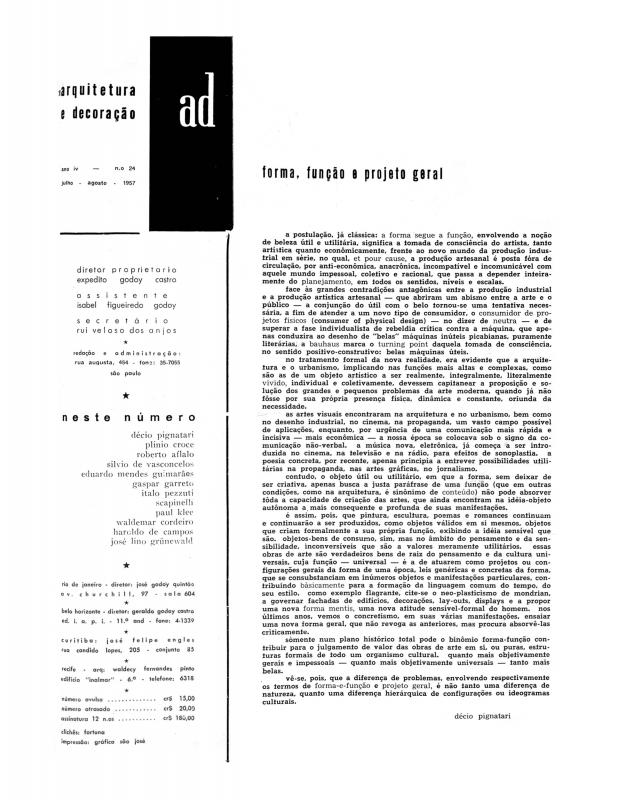This review was written in 1961 to be included in the brochure for the solo exhibition of work by Hermelindo Fiaminghi (1920–2004) at the Galeria Aremar, in the city of Campinas (state of São Paulo). The reviewer describes the critical situation facing the Brazilian Constructivist art movement at that time, in the early 1960s. Décio Pignatari condemns the failure of the plan to unite art and industry, which had a considerable impact among concrete artists working in São Paulo in the 1950s.
From the 1950s, the author, Décio Pignatari (1927–2012), was one of the key Brazilian proponents of a new kind of poetry that was primarily focused on its visual aspect, as per his “Manifesto de Poesía Concreta” (1961) which he coauthored with the brothers Augusto and Haroldo de Campos. In addition to his work in advertising and his role as a radical art critic, Pignatari was one of Brazil’s pioneers in the field of semiotic studies. His thesis (FAU-USP, 1979) on the theory advanced by Charles Sanders-Peirce, was published as: “Por um pensamento icônico: semiótica da arte e do ambiente urbano.” A communications theorist, he translated works by Marshall McLuhan. At a more creative level, he translated classical works by Dante, Goethe, and Shakespeare.
[See the ICAA digital archive for the text: “Plano-pilôto para poesia concreta,” by Augusto de
Campos, Décio Pignatari, and Haroldo de Campos (doc. no. 1090135), published in Noigandres. See also the following articles published in A & D: by Décio Pignatari, “Arte concreta: objeto e objetivo” (doc. no. 1087349) and “Forma, função e projeto geral” (doc. no. 1090070); by Oscar Niemeyer, “O problema social na arquitetura” (doc. no. 1110341); by Waldemar Cordeiro, “O objeto” (doc. no. 1086891) and “Teoria e prática do concretismo carioca” (doc. no. 1087287); by Theon Spanudis, “A pintura de Alfredo Volpi” (doc. no. 1085614) and “A pintura de José Antonio da Silva” (doc. no. 1110357); by Augusto de Campos, “Poesia concreta” (doc. no. 1090169); and by Eduardo Corona, “O testamento tripartido de Max Bill” (doc. no. 1110330).
See also the essay by Ivo Zanini about the artist Hermelindo Fiaminghi: “Uma vivencia diferente: o pai e os 4 filhos num trabalho único” (doc. no. 1305191)].










